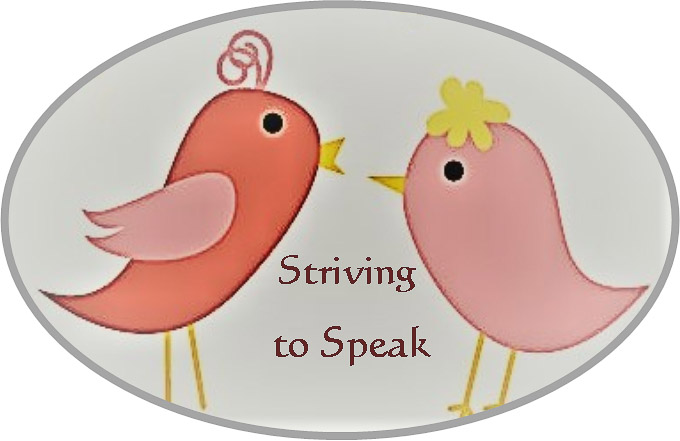For many kids with selective mutism, challenges at school reach beyond their struggle to communicate. The anxiety that drives mutism often causes other social fears and avoidance. Eating in front of others is a common challenge that children with selective mutism encounter at school.
Mary refuses to eat a school. Her parents pack her lunch each day with her favorite foods, and every day the food comes home again, untouched. Mary complains that the cafeteria is too noisy and busy and she doesn’t feel comfortable eating with so many people around.

Eating in front of others can be very difficult for children with social anxiety. Fear of being watched, judged, and criticized may result in refusal to eat and drink during lunch and snack time at school. In addition to these social fears, some children may find it difficult to eat because they experience sensory overload in a loud, chaotic cafeteria, or because they are overly sensitive to food textures and smells. Supportive parents and school staff can help children take small steps to overcome their difficulties.
Accommodations should be put in place first to create an environment in which the child is comfortable enough to eat. Then, small steps can be taken to move the child into the regular dining environment. This gradual transition is similar to the process we use to help these children overcome their fear of speaking.
The first step for Mary could be to eat lunch in the classroom with her teacher and/or a small group of friends. After she is comfortable in that situation, she could move to a small table in a quiet part of the cafeteria, eating with the same group of friends. Mary might like to sit with her back toward other students so they won’t see her eating, or she might prefer to be positioned close to the door with a full view of everyone to help her feel less vulnerable. Gradually Mary could increase the number of students she sits by and move toward sitting at tables in the middle of room. This whole process could take weeks to months depending on how Mary progresses. It is important to stay positive and encouraging and to build on small successes.
This story about Mary is just one example of how a child can conquer the fear of eating at school. Each child needs an individualized plan that addresses his or her unique needs. Here are some tips to consider when helping a child who refuses to eat at school.
- Find out what specific fears or sensitivities the child has related to eating at school.
- Make sure lunch box and containers are easily opened.
- Cut up food into bite-sized pieces or use fun shaped food cutters like these.

- Avoid messy, sticky foods.
- Choose soft foods that require minimal chewing like applesauce, yogurt, or smoothies. You can find these items in disposable squeeze pouches making them super easy to eat, or save money by packing your own creations in reusable food pouches.
- Let the child help pack his lunch and pick which foods to include.

- Include a love note or joke in the lunchbox for the child to look forward to.
- Let the child choose where to sit and whom to sit by. Allow a sibling to sit with the child, if possible.
- Parents can join the child at lunch a few times to help them ease into the environment.
- Allow the child to enter the cafeteria a few minutes early to get settled before the crowd of students arrives.
- Give the child extra time to eat.
- Designate a friend or specific adult in the cafeteria that the child is comfortable with to help her open items, clean up spills, or assist with anything else she may need.

- If the child has issues with eating food in general, occupational therapy may be helpful.
- If noise is an issue, have the child sit in a quiet corner, away from the other tables, or use earplugs or noise canceling headphones.
- Get an allergy alert bracelet for a child with food allergies and create a designated allergen-free table.
- Make it fun! Have a picnic on the playground or in the classroom, pack a special surprise, or provide positive reinforcement or rewards for progress.

- If the child needs to purchase lunch at school, prepare him beforehand. Role-play the process at home and then practice at school. Have a friend or trusted adult help the child until he feels comfortable on his own.
- For older children and teenagers, cognitive therapy can help them explore their fears surrounding eating and identify and change distorted thoughts.
Many children with selective mutism struggle to eat at school, but with careful, individualized planning, these kids can overcome their difficulties.


Hello, I found your blog/website while searching for “practicing brave talking at school” for my 13 year old daughter with SM. Thanks for all the information. We are out of Maryland and I have just started a local meetup group with parents in the area who have kids with SM. I was surprised to learn that they all were able to get their schools to provide a keyworker for helping with SM interventions while my daughter did not receive any help at her public school except for a brief meeting with her school psychologist to rate her anxiety level. My daughter can hardly speak to her peers, has never raised her hand in class and can not participate orally- had to convince her French teacher that she can still learn a foreign language despite SM. I have rolled up my sleeves and am ready to work with her at school this year so was looking for tips. I will try what you have put out and see how it works. Thanks again! -Mom from Maryland.